This is an ode to the mosaic stepping stone.
There is much to praise:
Each stone can be its own design or part of a theme, or even part of a larger mosaic image made by placing similar stepping stones side by side.
Stepping stones allow you to build a larger design incrementally, from paths to patios, even whole landscapes.
They allow you to work on a project as you find the time instead of committing to a rigid installation schedule, such as required for pouring a concrete slab.
They don’t require large equipment or contractors.
They don’t require disruption of the installation area necessarily.
They make doing the work as satisfying and peaceful as the results.
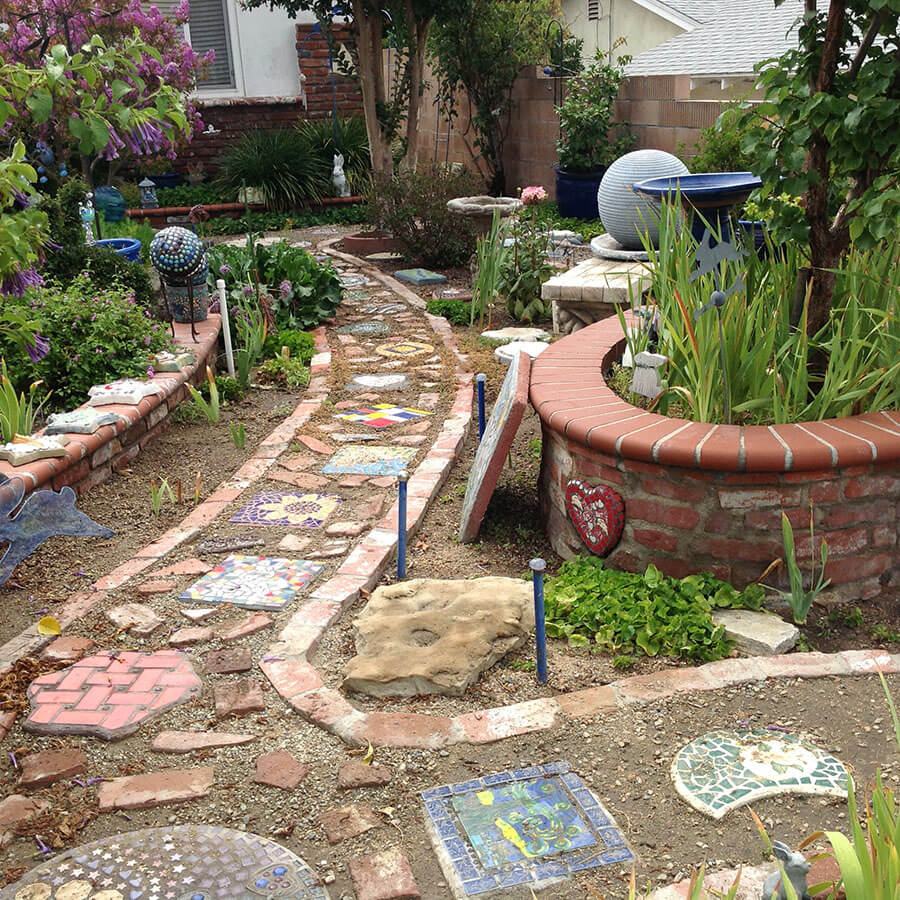
In my recent post about drainage for garden mosaics, I recommended a quilt of stepping stones as a possible solution to the case study, and I was hoping someone would email me photos of their garden path or patio done that way.
Artist Kim Kahrilas delivered in a big way with photos of her Southern California garden pathways.
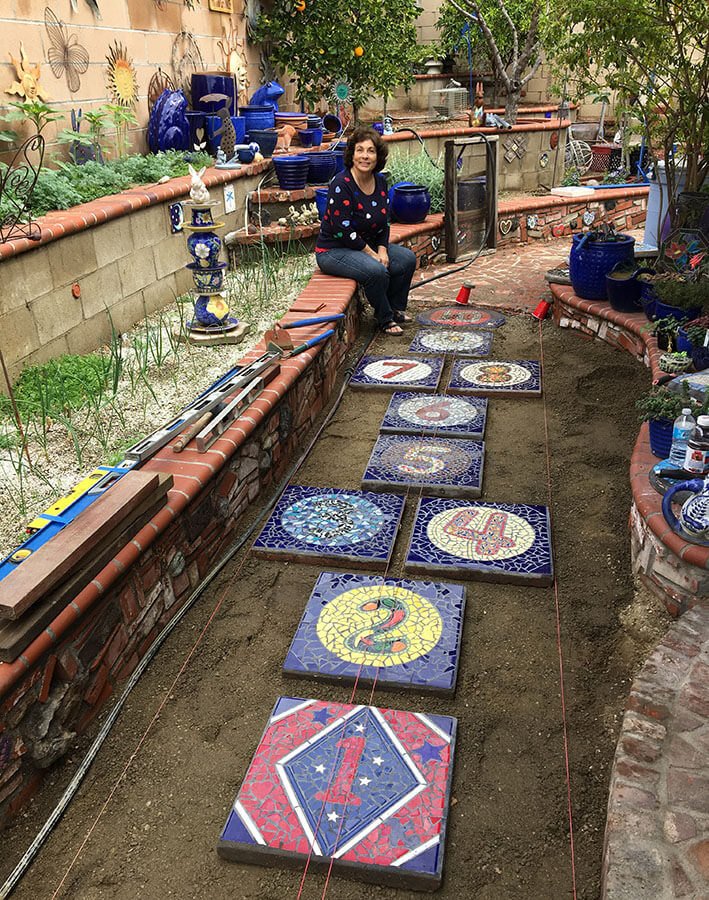
Made from mosaic stepping stepping stones, the paths were part of a complete lawn replacement project, which replaced water-needy grass with succulents and rock gardens.
Stepping stones are easily made using thinset mortar on a concrete paving stone, both of which can be purchased at building material stores.
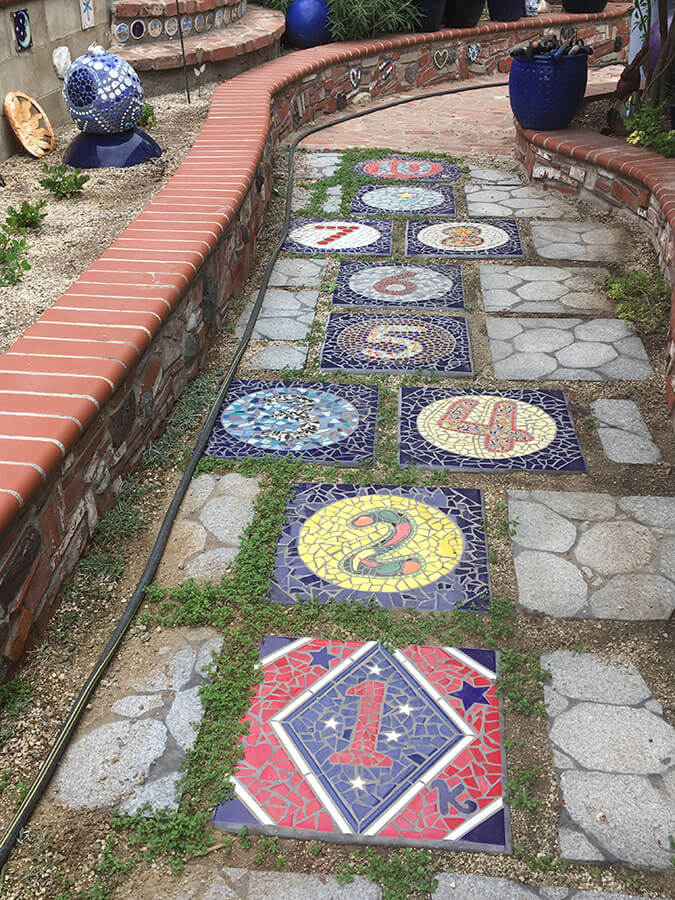
Best Scale for Viewer
There is another advantage of making smaller mosaics on stepping stones compared to one large mosaic composition on a concrete slab.
Large scenes are wasted in mosaic floors because the viewer doesn’t see all of the mosaic at once. How often will the room or patio be completely empty for viewing?
On the other hand, designs on the scale of a stepping stone or a few adjacent stepping stones are easily viewed merely by looking down.
That makes them the best scale for outdoor floor mosaics.
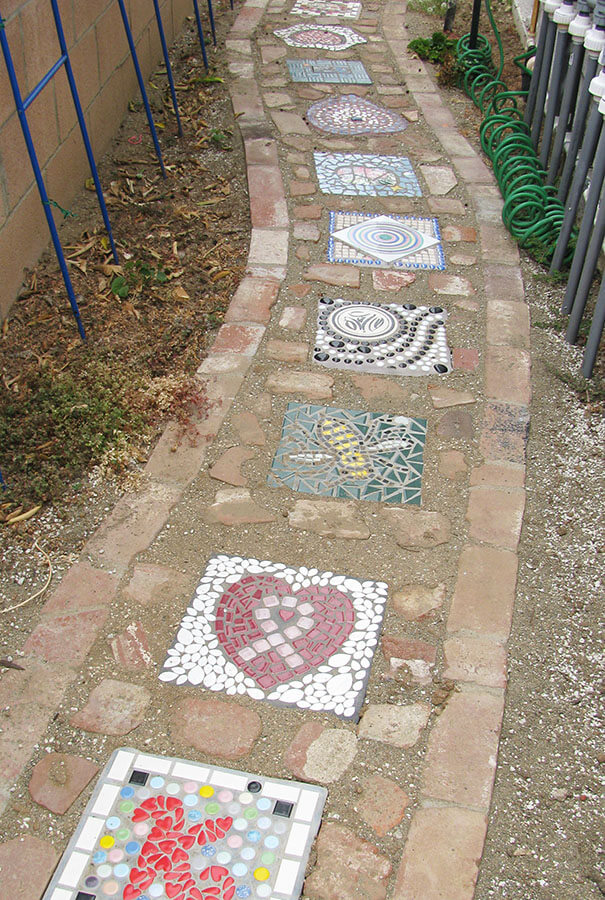
Freeze Protection
I thought of yet another advantage of mosaicing on stepping stones instead of a slab, even if you end up laying the stepping stones on the slab.
If you live in Southern California, you can assume that your outdoor mosaic will last as long as ancient Greek mosaics, at least in terms of the weather.
BUT if you live in North Dakota or anywhere else that has hard freezes, your mosaic will be subjected to a lot more stress.
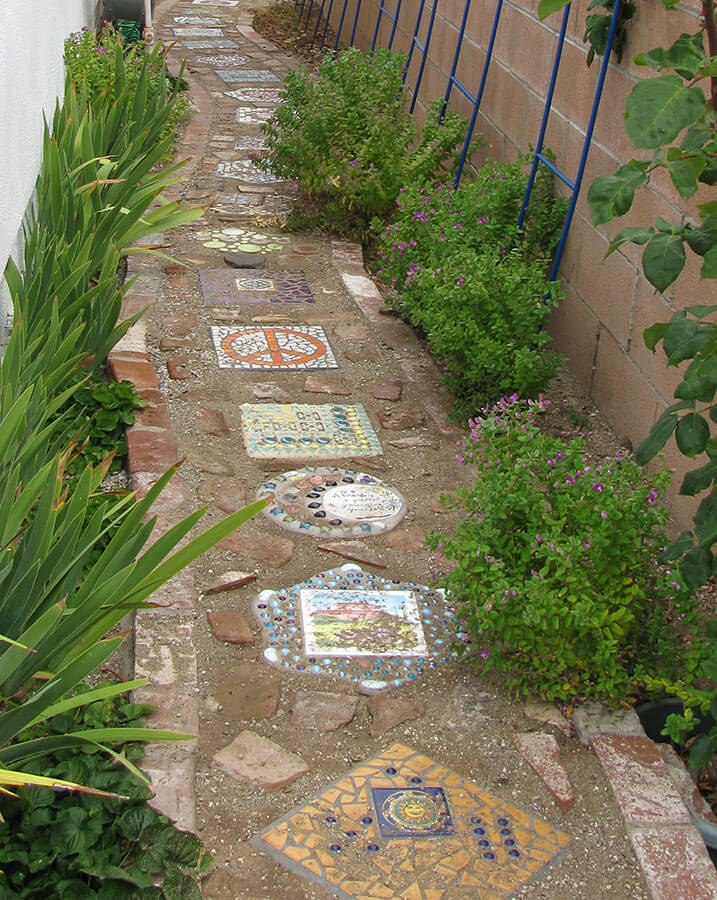
Glass tile might be nonporous and frost proof, but the concrete and the grout aren’t.
You should clean and reseal the stepping stones each fall to minimize damage, but you can also bring them indoors to a garage or crawlspace for the winter.
You can’t do that with a mosaic mounted on a slab.
If anyone is doubting the affect of hard freezes on mosaics, take a look at the Gaudi Mosaic Bench an artist made in Colorado.
In that project, the artist used glazed ceramic tiles, which are soft and porous, and so the hard freezes quickly destroyed the mosaic.
Stick to glass and porcelain when freezing temperatures are involved.
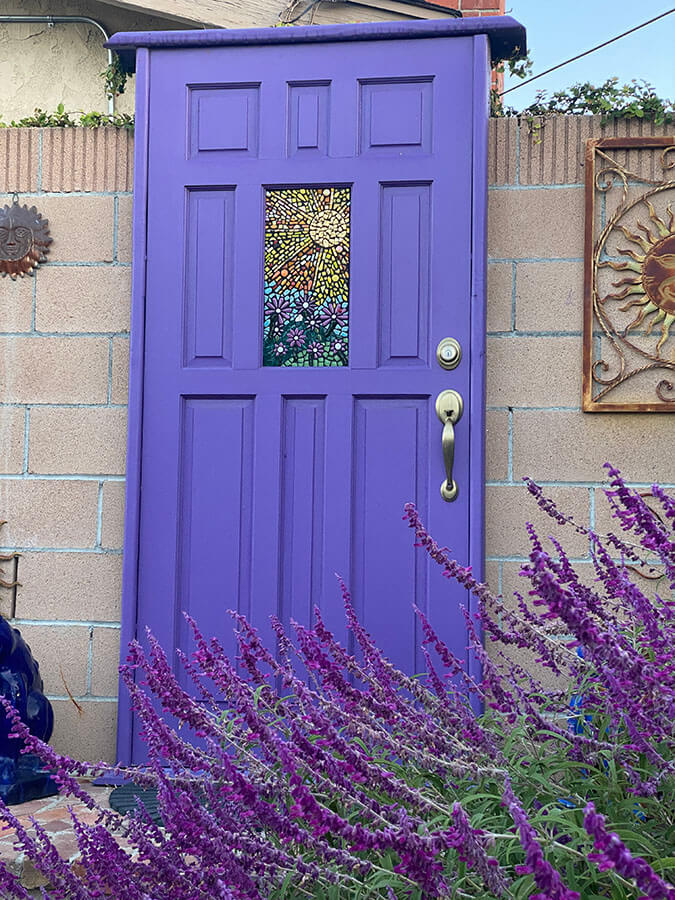

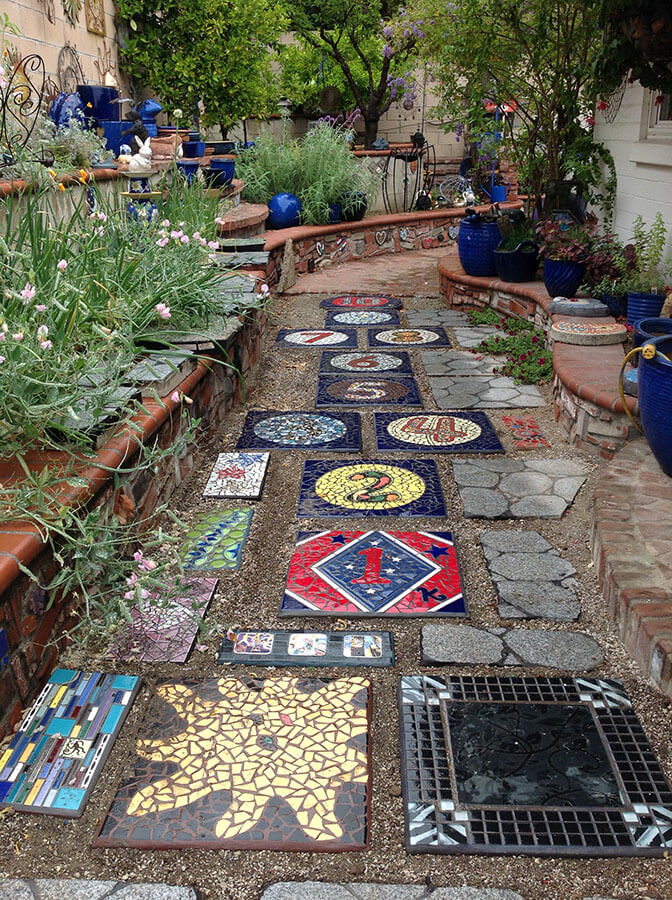
Leave a Reply